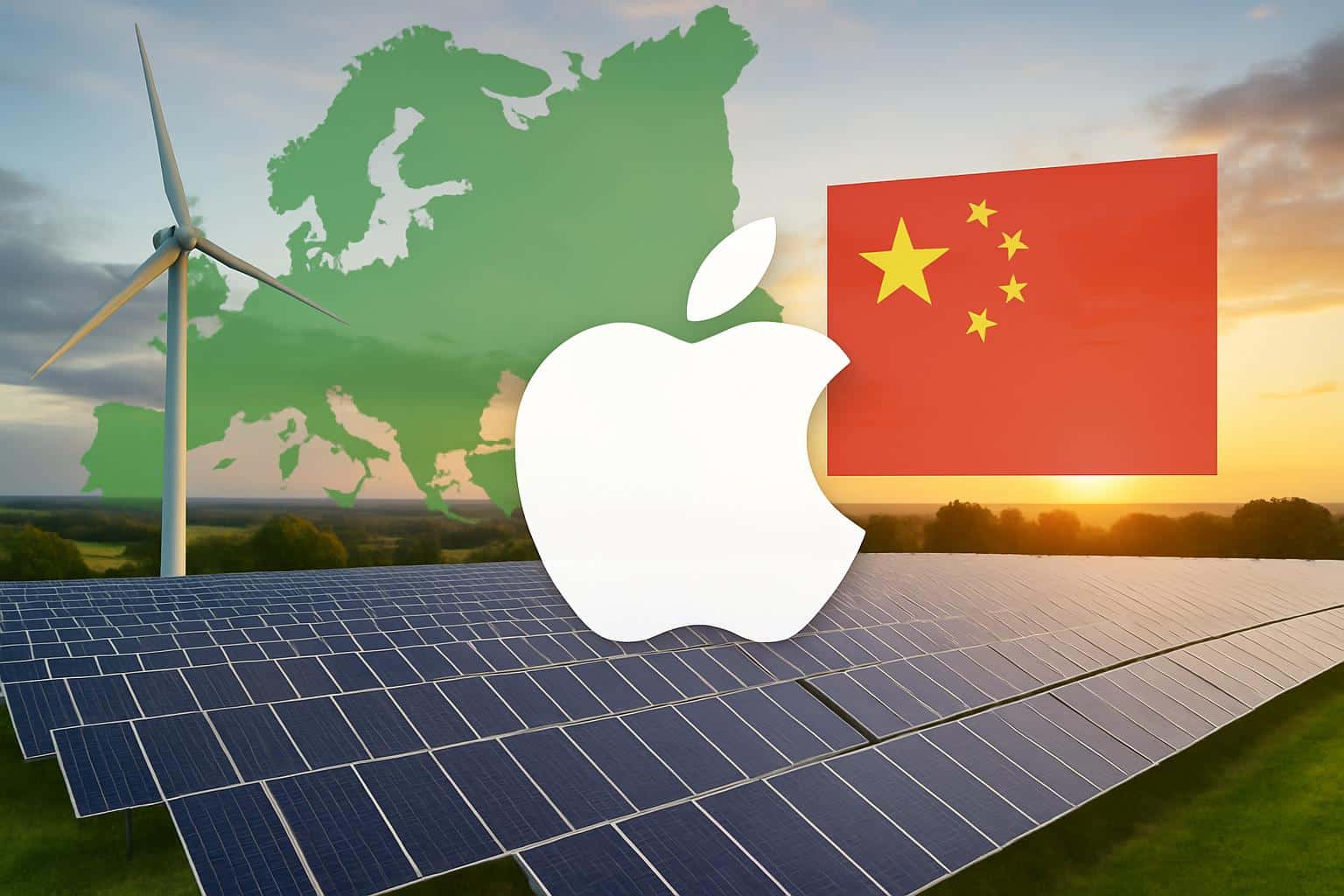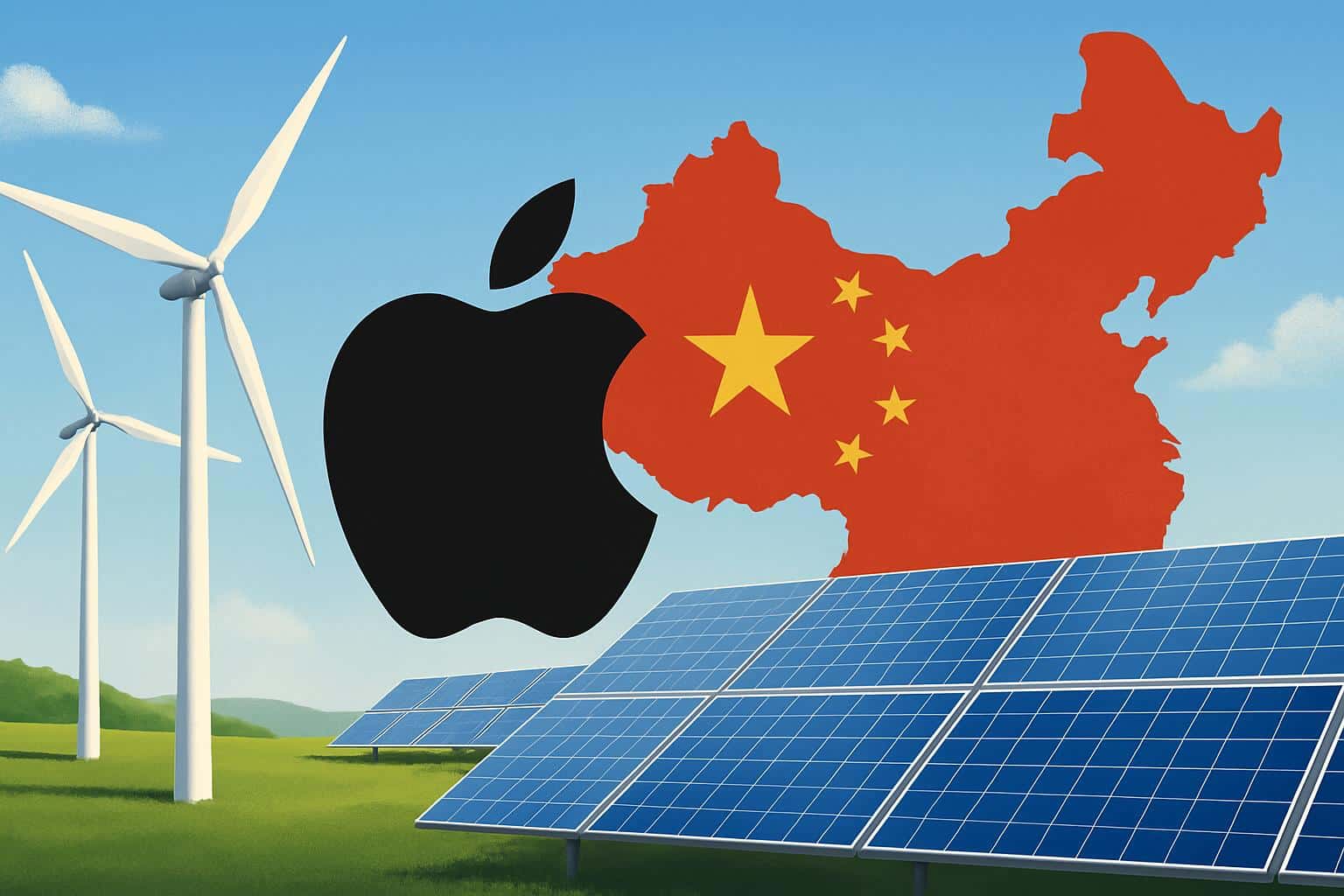Apple has signed supply agreements for 650 megawatts of new renewable capacity across Europe, a mix of solar and wind power that will generate the clean energy equivalent of powering about 75,000 homes in Germany each year. The company is also announcing a $150 million effort in China to speed up suppliers’ transition to renewable energy, underscoring how its climate strategy now spans both customer use and manufacturing energy.
How Apple’s 650 Megawatts in Europe Add Up
The European package draws from a variety of markets and technologies. Solar represents the largest segment of the portfolio with about 131 megawatts in Spain, 110 megawatts in Greece, 110 megawatts in Latvia and another 40 megawatts in Poland. Wind provides another tranche, roughly 99 megawatts of wind in Romania and partly from a 129 MW hybrid solar‑wind portfolio in Italy. Some sites are already generating; others will be online in the near term.

In practical terms, this new operation will feed into national grids and Apple will apply the renewable energy attributes to address any imbalance in electricity consumed across its local operations in Europe as well as by customers using their devices. The company generally prefers long‑term power purchase agreements and other similar offtake products that are targeted at “additionality,” helping get new projects online rather than just purchasing certificates from a previously existing project. Europe’s Guarantee of Origin system will monitor and verify the renewable attributes, while the contracts give developers financing certainty.
Why Europe, and Why Now, for Apple’s Clean Energy Push
Both cost and speed are at play. The International Energy Agency says solar and onshore wind have become the cheapest sources of new electricity for much of the world, and corporate buyers are acting accordingly. Last year, companies signed more than 40 gigawatts of clean energy deals globally, according to BloombergNEF, with Europe capturing a record portion as policy and permitting improved.
Speed counts as data demand balloons. Utility‑scale solar can go from contract to commissioning in as little as 18 months, in stages that permit early partial generation. For Apple, which already operates retail, logistics and services infrastructure across the continent — including a data center in Viborg, Denmark — locking in new local megawatts makes it more resistant to the short-term vagaries of power prices and dovetails with its 2030 carbon goals.
China Investment Targets Suppliers’ Shift to Renewables
The prospective $150 million investment in China is intended to close the last mile on manufacturing emissions. More than 90 percent of Apple’s production in the country is already powered by renewable sources, through suppliers, Apple says. The new financing is expected to be used for on-site rooftop solar at factories, off-site procurement of wind and solar and battery storage to help with curtailment issues and variable sources of energy — both major problems in a number of Chinese provinces.

Apple’s Supplier Clean Energy Program, which is featured in its Environmental Progress Report, includes hundreds of participating suppliers and more than 15 gigawatts of contracted renewable capacity globally. By building on that base in China, they are tapping into new markets for green power – and certificates – as well as helping suppliers with grid integration and round-the-clock operation.
What Apple’s Carbon Math Means for 24/7 Clean Energy Goals
The use of sold products — from iPhone charging to Mac workloads — is responsible for about a third of Apple’s overall carbon footprint, a portion that can be underappreciated compared with manufacturing. The European megawatts are meant to try and make a dent in a portion of that energy use on an annual basis. Even with its coarse annual analysis, Apple has a useful list of new‑build projects that most other companies aren’t providing, as well as hybrid wind-solar portfolios and storage in its pipeline — all characteristics you’d expect to lead toward more precise 24/7 matching by location and hour sooner than later.
Context on Big Tech Clean-Power Buyers and Market Trends
The announcement comes as part of a larger surge in corporate clean‑power purchasing. Meta has lined up more than 2 gigawatts of solar additions this year and Microsoft has signed deals for nearly 1.5 gigawatts, company disclosures show. Lazard’s most recent levelized cost analyses and the research from IEA and BloombergNEF explain why: new solar and wind is often coming in cheaper than new fossils, while battery costs have plummeted over the past decade, thanks to both electric vehicles as well as lithium-ion storage for renewable energy, making firm (as opposed to just intermittent) clean power increasingly achievable round‑the‑clock.
Apple’s choice to announce them through regional channels and not a central press release suggests that such deals could be localized in the same way that energy markets are. The European portfolio builds near‑term capacity where policy and interconnection are friendliest to new projects, while the China fund confronts the supply chain’s most difficult issues — on the factory floor and at the substation. The next milestones to watch are storage pairings, hourly matching pilots and how fast suppliers in China deploy those funds into steel in the ground.

